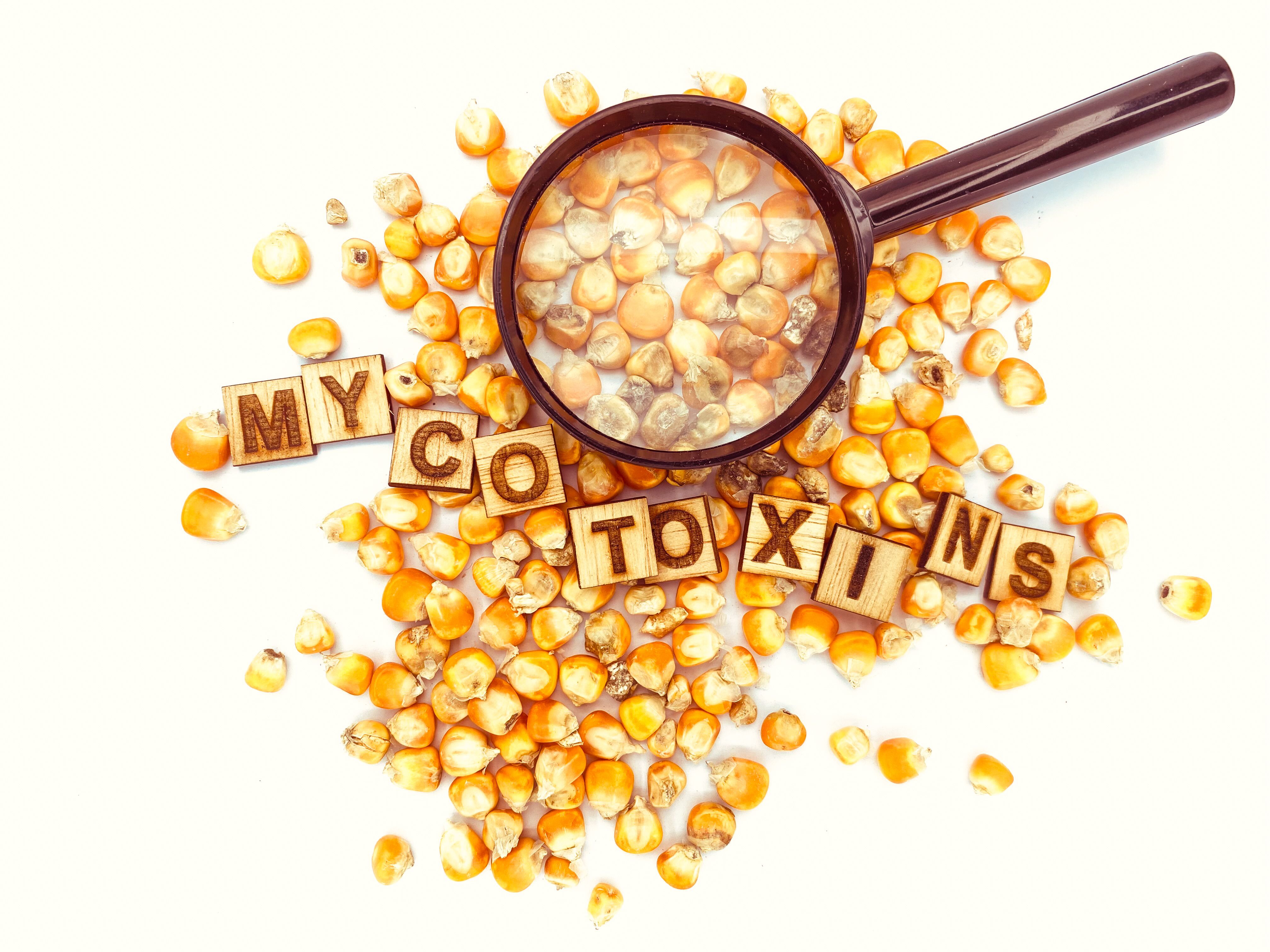Molecularly Imprinted Polymer Grafted onto Magnetic Photonic Crystal Microsphere for Ochratoxin A Extraction
A selective adsorption material was sought to capture and possibly remove ochratoxin A (OTA) from food and environmental samples prior to high performance liquid chromatography (HPLC) analysis.
Researchers from three Chinese universities have published a study in the Journal of Chromatography A that targeted ochratoxin A (OTA) by synthesizing a molecularly imprinted polymer (MIP), or plastic antibody, onto a magnetic inverse opal photonic crystal microsphere (MIPCM), capturing and quantifying OTA in combination with high performance liquid chromatography (HPLC) (1).
Awareness Mycotoxins in Corn for Animal feed | Image Credit: © Unique Graphics - stock.adobe.com

A molecularly imprinted polymer (MIP), also known as a plastic antibody, is a synthetic polymer designed to selectively recognize and bind to a specific target analyte. It is created using a template molecule, functional monomers, and cross-linking agents to form a polymer network with cavities that match the shape and functionality of the target molecule. The MIP is immobilized onto a magnetic inverse opal photonic crystal microsphere (MIPCM), which provides additional functionality and allows for easy manipulation and separation. The MIPCM acts as a solid support for the MIP, enabling efficient capture and enrichment of the target analyte from a sample. HPLC is then employed for the quantitation of the captured analyte, where the MIPCM-bound analyte is eluted and analyzed using a liquid chromatography (LC) system with high-resolution separation capabilities.
The study, which brought together Nanjing Normal University and Jiangsu Academy of Agricultural Sciences, both in Nanjing, China, and Jinan University in Guangdong, China, aimed to monitor and possibly remove OTA present in contaminated food and environmental samples. The researchers said OTA is one of the most widely distributed, and most toxic, mycotoxins in moldy or fermented grains. Its effects in humans and animals have been known to be carcinogenic, hepatotoxic, immunotoxic, nephrotoxic, or teratogenic.
Countries such as China and Russia have set an OTA limit of 5 µg/kg in cereals and bean products. Taking cereals as an example, washing is one way to remove OTA left over in otherwise contaminated products. But OTA is chemically stable and not easily reduced in nature, meaning that the washed-away product is released back into the environment through wastewater and could enter the food chain again.
As previous sorbents used in the extraction of OTA have shown a lack of selectivity and difficulty extracting trace amounts from samples, a catalyst-free molecular imprinting technique was applied in this experiment due to its high efficiency, low cost, and green-friendly character. MIPs, which are prepared simply through this technique, are known for their selective recognition of target molecules, also known as plastic receptors or antibodies. They have been studied as selective adsorption media, chromatographic separation material, chemical sensors, and biomedical application materials in food, medicine, and the environment, all relevant in this case.
To improve the binding capacity of the MIP for this application, three-dimensional (3D) ordered MIPCM was used as the supporting material to graft an MIP layer, also improving mass transfer speed. Fluorenemethoxycarbonyl-D-phenylalanine (Fmoc-D-Phe) was used as a dummy template for the imprinting.
The MIP@MIPCM approach yielded ultrahigh selectivity, according to the results reported in the study, with an imprinting factor of 130, high specificity with cross-reactivity factors of 3.3–10.5, and large adsorption capacity of 60.5 μg/mg. When this process was combined with HPLC for quantification of OTA, the linear detection range was 5–20,000 ng/mL, detection limit 0.675 ng/mL, and recovery rates were 84–116%. The researchers concluded that MIP@MIPCM has potential as an alternative to biological antibody modified materials for the selective enrichment of OTA.
Reference
(1) Dou, M.; Wang, S.; Li, W.; Li, Q.; Xu, J.; Li, J. High-performance molecularly imprinted polymers grafted magnetic photonic crystal microspheres for selective enrichment of ochratoxin a. J. Chromatogr. A 2023, 1695, 463932. DOI: 10.1016/j.chroma.2023.463932
Study Explores Thin-Film Extraction of Biogenic Amines via HPLC-MS/MS
March 27th 2025Scientists from Tabriz University and the University of Tabriz explored cellulose acetate-UiO-66-COOH as an affordable coating sorbent for thin film extraction of biogenic amines from cheese and alcohol-free beverages using HPLC-MS/MS.
Multi-Step Preparative LC–MS Workflow for Peptide Purification
March 21st 2025This article introduces a multi-step preparative purification workflow for synthetic peptides using liquid chromatography–mass spectrometry (LC–MS). The process involves optimizing separation conditions, scaling-up, fractionating, and confirming purity and recovery, using a single LC–MS system. High purity and recovery rates for synthetic peptides such as parathormone (PTH) are achieved. The method allows efficient purification and accurate confirmation of peptide synthesis and is suitable for handling complex preparative purification tasks.







